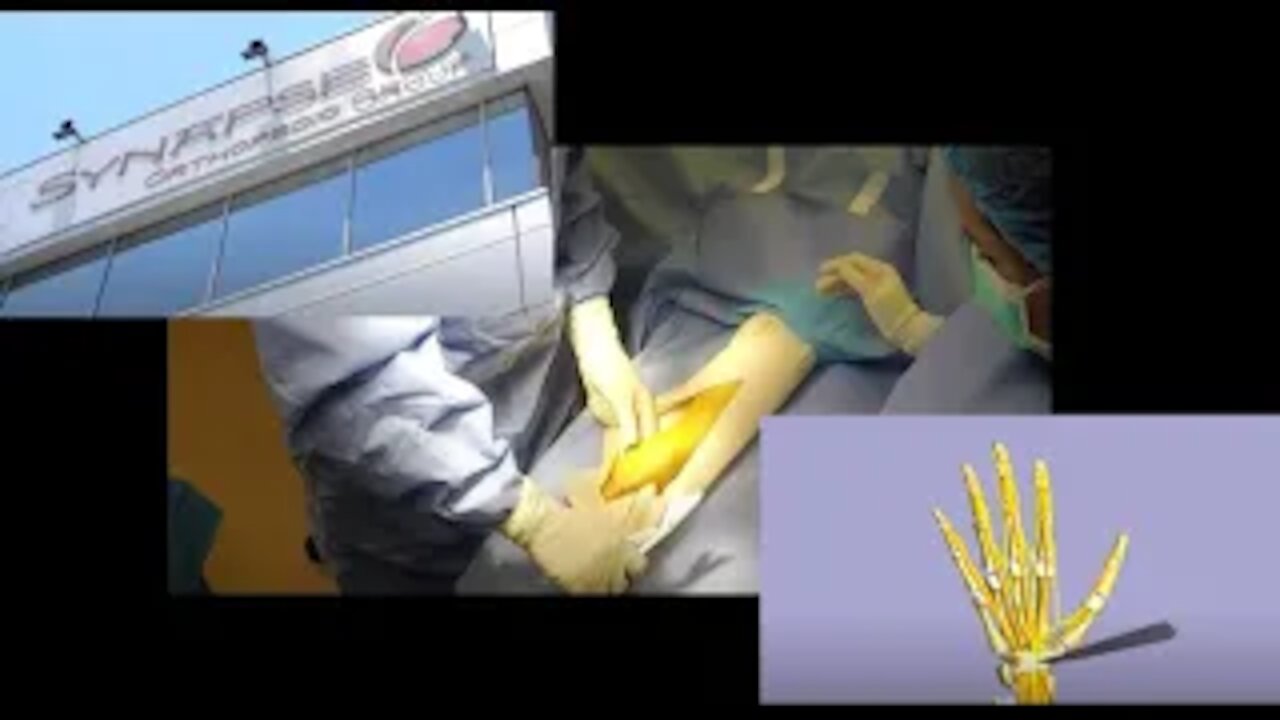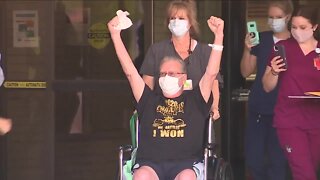Premium Only Content

Carpal Tunnel Release Patient Recovery
Another carpal tunnel release patient doing better after surgery with Edwin Haronian MD. She is in the process of waiting for her left hand to be approved. She looks forward to the future and is ready to finish her treatment so that she can get back to work.
She loves her treatment and loves coming to our Sherman Oaks office.
Call us to schedule an appointment: (818) 788-2400
Locations in Pomona, Sherman Oaks, and Los Angeles
During open carpal tunnel release surgery , the transverse carpal ligament is cut, which releases pressure on the median nerve and relieves the symptoms of carpal tunnel syndrome.
An incision is made at the base of the palm of the hand. This allows the doctor to see the transverse carpal ligament. After the ligament is cut, the skin is closed with stitches. The gap where the ligament was cut is left alone and eventually fills up with scar tissue.
If you have open carpal tunnel release surgery, you typically do not need to stay in the hospital. It is usually done under local anesthetic, and you can go home on the same day.
After surgery, the hand is wrapped. The stitches are removed 1 to 2 weeks after surgery. The pain and numbness may go away right after surgery or may take several months to subside. Try to avoid heavy use of your hand for up to 3 months.
The timing of your return to work depends on the type of surgery you had, whether the surgery was on your dominant hand (the hand you use most), and your work activities.
If you had open surgery on your dominant hand and you do repeated actions at work, you may be able to return to work in 6 to 8 weeks. Repeated motions include typing or assembly-line work. If the surgery was on the other hand and you do not do repeated actions at work, you may be able to return to work in 7 to 14 days.
If you had endoscopic surgery, you may be able to return to work sooner than with open surgery.
Open carpal tunnel surgery is considered when:
Symptoms are still present after a long period of nonsurgical treatment. In general, surgery is not considered until after several weeks to months of nonsurgical treatment. But this assumes that you are having ongoing symptoms but no sign of nerve damage. Nerve damage would make surgery more urgent.
Severe symptoms (such as persistent loss of feeling or coordination in the fingers or hand, or no strength in the thumb) restrict normal daily activities.
There is damage to the median nerve (shown by nerve test results and loss of hand or finger function), or a risk of nerve damage.
Tumors or other growths need to be removed.
Most people who have surgery for carpal tunnel syndrome have fewer or no symptoms of pain and numbness in their hand after surgery.
In rare cases, the symptoms of pain and numbness may return (the most common complication), or there may be temporary loss of strength when pinching or gripping an object, due to the cutting of the transverse carpal ligament.
If the thumb muscles have been severely weakened or wasted away, hand strength and function may be limited even after surgery.
For more information please visit our website at: http://www.synapsedoctor.com
You can also follow our social media pages at:
http://www.facebook.com/synapsedoctor
http://www.instagram.com/synapsedoctor
http://www.twitter.com/synapsedoctor
-
 5:19
5:19
ElasticSteel
4 years agocarpal tunnel, demo mini routine
106 -
 13:53
13:53
AndrewReevesNeurology
4 years agoNeurologist discusses Carpal Tunnel Syndrome
126 -
 0:15
0:15
Davidtheexplorer
4 years agoOrder for carpal tunnel
42 -
 1:52
1:52
WEWS
5 years agoCoronavirus Hospital Patient Release
327 -
 9:59
9:59
JacksonsRamblings
4 years ago $0.39 earnedTunnel at Tunnel Springs
739 -
 0:15
0:15
EntertainmentVideos
4 years agoTunnel
32 -
 1:18
1:18
bcaabc
4 years ago $0.01 earnedBALTIME TUNNEL
46 -
 31:32
31:32
hefreels
4 years agoNemo Tunnel
91 -
 0:19
0:19
scomo1947
4 years agoPilot recovery
113 -
 0:56
0:56
aznative13
4 years agoAmazing tunnel
135